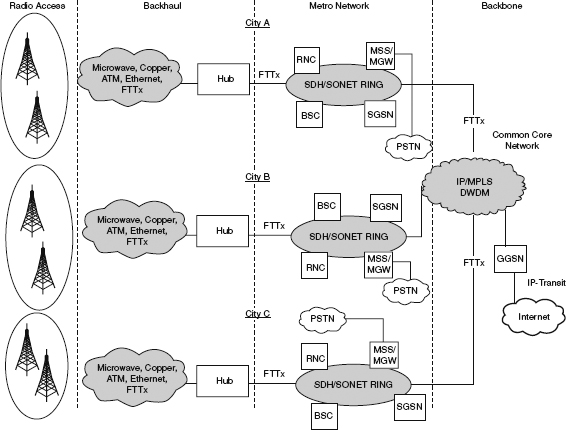7
Transmission Networks
7.1 Introduction
In a cellular network, the traffic from Cell Sites to the BSCs/RNCs and further to the Mobile Switching Centers and Data Gateways and finally to the outside world is carried by what is known as Transport Network or Transmission Network. In a nutshell, the purpose of the transmission network is to provide reliable aggregation and delivery infrastructure for the transport of any type of traffic.
From a network hierarchy perspective as shown in Figure 7.1, the transport network can be divided into three segments: access (backhaul) network, metro or regional network and core (backbone) network. This segmentation is not a standard and could change from operator to operator and country to country.
Figure 7.1 Transport network hierarchy

At a high level, backhaul segment connects BTSs/NodeBs to one or more traffic aggregation sites (transmission hubs) which are then connected to BSCs/RNCs. The metro transport network connects multiple controller sites to MSCs and to Data Gateways and also connects multiple MSCs and Data Gateways to each other within a city. The metro segment further provides connectivity to the core network. The core transport network provides intercity connectivity and to the outside world (PSTN, Internet, etc.).
The selection of transport technology for any of the segments is dependent on many factors, including but not limited ...

